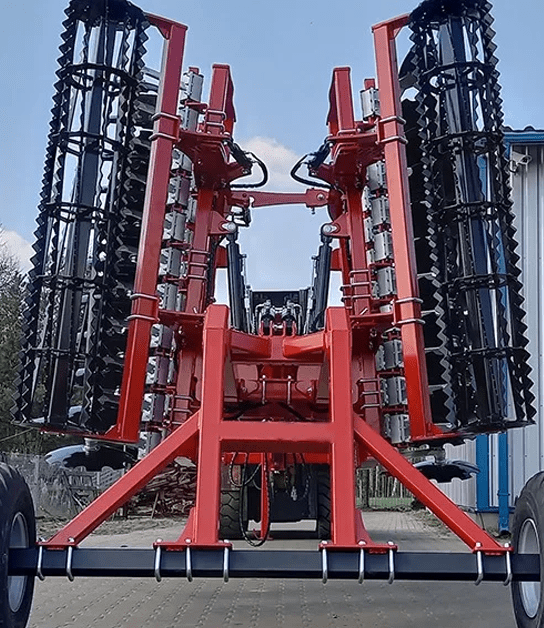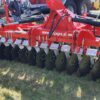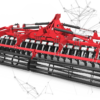Probably everyone is aware that the quality and quantity of crops depends on the fertility of the soil in the agricultural field. Therefore, between the two main crops, catch crops are grown, i.e. plants that play the role of green manure. Natural green fertilizer provides the soil with valuable minerals, thanks to which its fertility increases. The sowing of the catch crop is carried out immediately after harvest in order to properly rebuild the soil conditions. For this purpose, professional agricultural machinery is used, which greatly facilitates and speeds up this work. Check what it is all about.
- What are catch crops?
- What do we gain by sowing catch crops?
- What machines are used for sowing catch crops?
What are catch crops?
Catch crops are green crops that are sown in the field in order to repel weeds and prepare in time for the harvest of hay, silage or green mass. It is this green mass that is an important form of organic fertilizer, thanks to which we are able to effectively rebuild the condition of the depleted soil after harvesting. What's more, by digging the green mass with the soil, it protects it from the sun and prevents the loss of water and minerals.
Today, the most popular plants for catch crops are plants from the family of legumes and legumes. However, it all depends on the soil conditions, as some of them will not perform as well as phacelia or white mustard.
What do we gain by sowing catch crops?
As we have already mentioned, green manure strongly contributes to improving the structure and fertility of the soil, and thus to obtaining richer crops in the future. Therefore, sowing is carried out right after the harvest and at the same time before the next crop of plants. Catch crops are characterized by rapid growth, namely their vegetation period is about 60-80 days, so they will have time to germinate and grow before the next crop. In addition, in addition to enriching the soil with nutrients and minerals, they secrete compounds that inhibit the development of harmful organisms, fight them and prevent the occurrence of diseases. For this reason, the sowing of catch crops is a kind of basic method of preventing the spread of disease and pests.
It is worth noting that the fresh mass of plowed plants can replace a few tons of manure, or allows you to obtain animal feed. Other advantages of catch crops include the fact that their presence in autumn and winter prevents wind and water erosion.
What machines are used for sowing catch crops?
Sowing the catch crop will not be carried out without a suitable agricultural machine such as a seeder, because the farms are so large that the manual method is completely out of the question. Pneumatic or mechanical seed drills are built of capacious seed tanks, apparatus, pipes and sowing coulters that introduce seeds straight into previously prepared furrows in the soil.
Both types of seed drills help to sow the entire surface of the field precisely in a few hours. However, they work on a different principle, therefore their choice depends on the preferences of the farmer. The pneumatic seeder is based on creating a vacuum that sucks in the seeds, while the mechanical one drives the entire structure through the movement of one of the wheels of the vehicle, thanks to which the sowing rollers transfer the grain through the sleeves straight to the ground.
Instead of seed drills, multifunctional tillage and sowing aggregates can be used, which will additionally prepare the soil comprehensively during one pass. This will allow us to minimize the number of agricultural machines passing through the field, which will have a better impact on the soil structure. In addition, the cultivation aggregates improve the process of digging, crushing and loosening the soil, as a result of which the crops germinate and grow faster.
However, remember to approach each farm individually, depending on the soil conditions and the type of sown crops. When focusing on preparing the soil and sowing it, a classic cultivating and sowing combination with discs or tines will do well. In the case of disc aggregates, they will better mix the soil with a large amount of plant residues, including green mass. On the other hand, stubble aggregates are designed to tear up the stubble, destroy weeds, crush clods and mix fertilizer with soil.
Related entries:
- Can a cultivator be used for sowing catch crops?
For effective sowing of catch crops, you can use a cultivator with an attached seeder. Check how... - Buying an agricultural machine - what should you pay attention to?
If you are looking for machines online, pay attention to the offers of manufacturers who have been... - Soil tillage: is it worth using the plowing or no-till method?
Comparing plowing and no-tillage is an important topic in agriculture, regarding the differences in farming methods... - Soil rolling - discover the benefits for your field
Soil rolling is an important process in agriculture, which aims to improve the structure and properties of... - What is a disc aggregate?
The disc cultivator is a multifunctional agricultural machine for tillage, which is designed to improve and...










